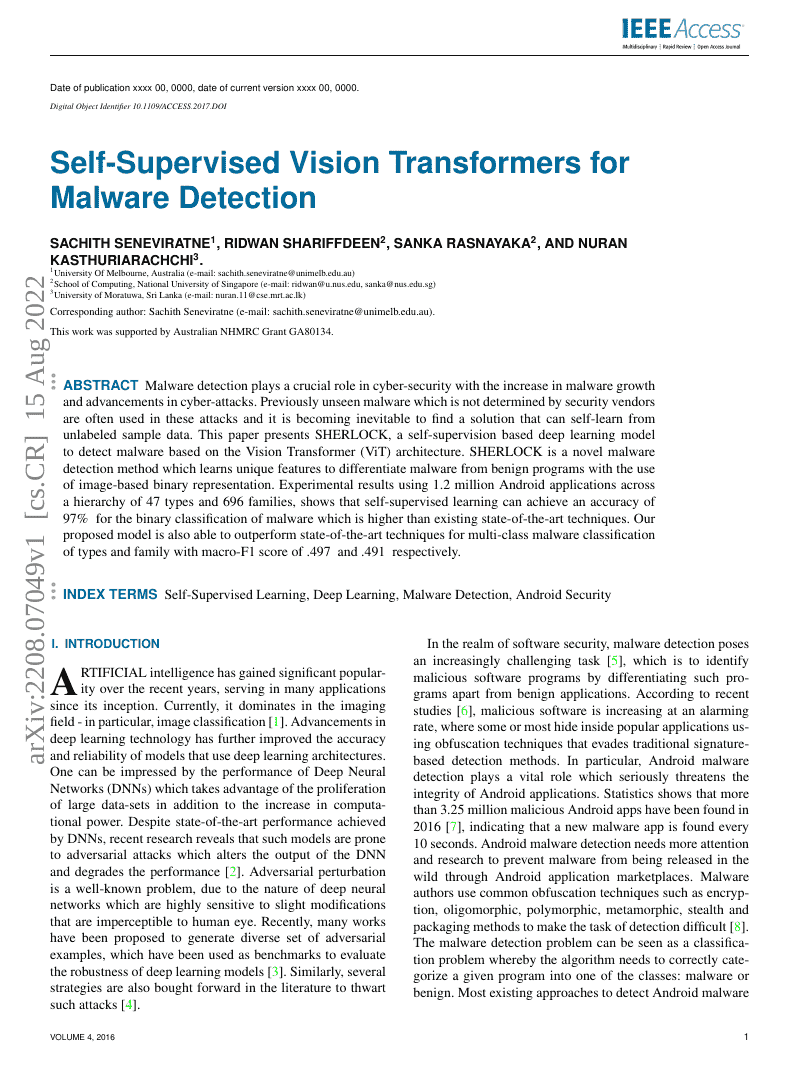Command Palette
Search for a command to run...
Sachith Seneviratne Ridwan Shariffdeen Sanka Rasnayaka Nuran Kasthuriarachchi

Abstract
Malware detection plays a crucial role in cyber-security with the increase in malware growth and advancements in cyber-attacks. Previously unseen malware which is not determined by security vendors are often used in these attacks and it is becoming inevitable to find a solution that can self-learn from unlabeled sample data. This paper presents SHERLOCK, a self-supervision based deep learning model to detect malware based on the Vision Transformer (ViT) architecture. SHERLOCK is a novel malware detection method which learns unique features to differentiate malware from benign programs with the use of image-based binary representation. Experimental results using 1.2 million Android applications across a hierarchy of 47 types and 696 families, shows that self-supervised learning can achieve an accuracy of 97% for the binary classification of malware which is higher than existing state-of-the-art techniques. Our proposed model is also able to outperform state-of-the-art techniques for multi-class malware classification of types and family with macro-F1 score of .497 and .491 respectively.
Code Repositories
Benchmarks
| Benchmark | Methodology | Metrics |
|---|---|---|
| malware-detection-on-malnet | SHERLOCK (type) | F1 score: 0.876 |
| malware-detection-on-malnet | SHERLOCK | F1 score: 0.854 |
| malware-detection-on-malnet | SHERLOCK (family) | F1 score: 0.878 |
Build AI with AI
From idea to launch — accelerate your AI development with free AI co-coding, out-of-the-box environment and best price of GPUs.